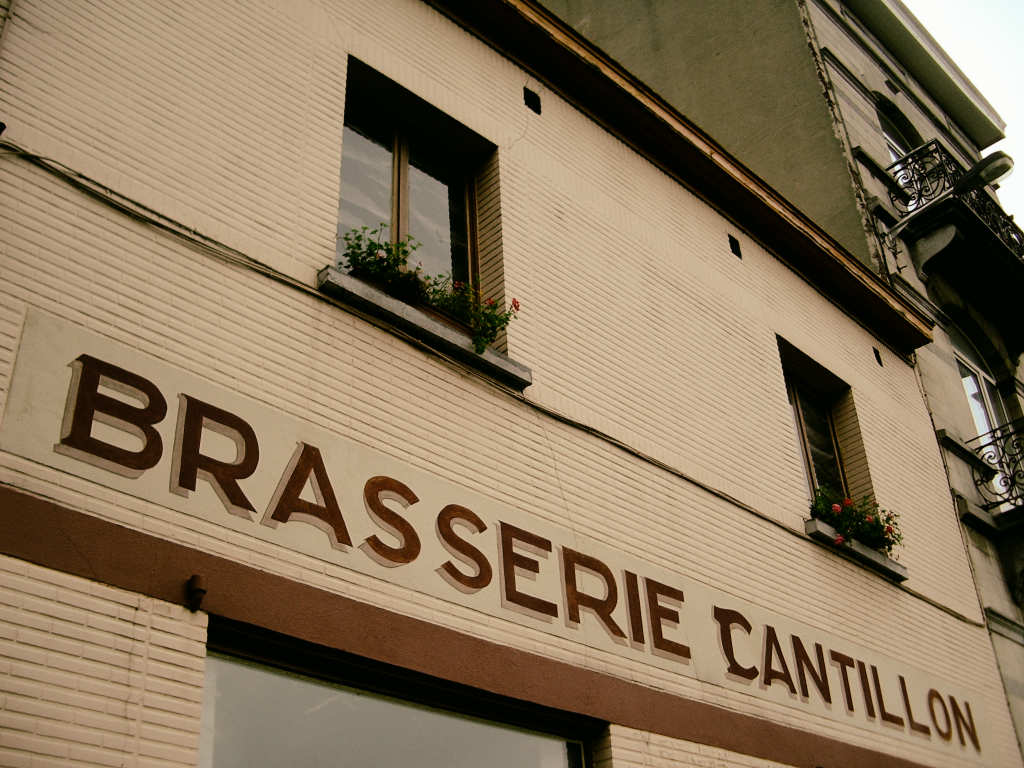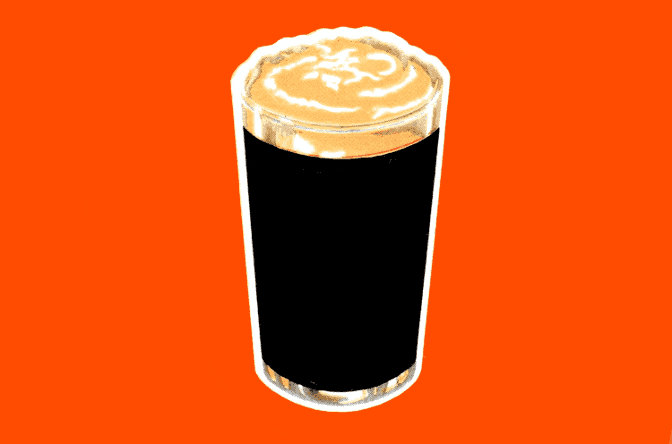Visit the Boak and Bailey's Beer Blog site
Here’s all the writing about beer, pubs and brewing of which we took particular note in the past week, from pawned trumpets to malfunctioning palates.
In Prague,*Max Bahnson, AKA*Pivni Filosof, has been surveying pub and brewery owners on the subject of business during lockdown and their hopes for after pubs are allowed to re-open there on 25 May. Some are philosophical, others angry, all of them interesting:
Jan “Hanz” Charvat (Zlý Časy, Pivkupectví, Bad Flash): The news caught me in Vietnam and I had to sort everything out with the staff over WhatsApp. The pub was fully closed over the first weekend and on the first Monday we opened the takeaway window, which has remained open throughout. The turnover is 15% of the normal. This covers the wages of the person at the window and maybe the energy costs. I’ll borrow money for the rent and the rest. The sales at Pivkupectví (the bottle shop) are the same, maybe a little higher.

From*Tandleman, interesting notes on the recent history of pub-going, when each brewery’s pubs had a distinct look* that told what beer to expect inside:
If you saw a pale, yellow-tiled, flat fronted building, then you knew for sure it was a Whitbread pub, Whitbread having inherited that particular house style from Threlfalls, who they had taken over in the 1960s. Bass houses were broadly speaking distinguished by their distinct corporate black signage, built as a canopy around the entrance. A relic of the Bass Charrington days, the included red triangle was very easy to spot from afar. Higsons pubs were identifiable by the splash of red and black and the little square, lighted box that you could spot a mile away and which, as you got closer had the re-assuring words ‘Higsons’ emblazoned thereon.
 SOURCE: Alexander Krivitskiy at Unsplash. At*A Fatal Glass of Beer,*Joe Tindall has a confession to make: he can’t always taste beer. Not an ideal state of affairs for a beer writer, as he explains:
SOURCE: Alexander Krivitskiy at Unsplash. At*A Fatal Glass of Beer,*Joe Tindall has a confession to make: he can’t always taste beer. Not an ideal state of affairs for a beer writer, as he explains:
Should I admit this? Might it damage whatever shred of credibility I have as someone who opines on beer? Well, hopefully it goes without saying that if I drink a beer than I can’t really taste, I’m not likely to mention it on this blog. It’d be dull reading if I did – every post would say “yet another beer that is almost completely devoid of flavour” – and unfair, too. I decided to write this post whilst reflecting on how my drinking has changed over the past couple of years, and how I’ve adapted to the situation.

Former publican Mitch Adams took a trip down memory lane, giving details of every role he’s had in the trade from a holiday job at 16 to running his own place:
Royal Pavillion Tavern & Pav Tav 2002-2003
Lived in a bedsit with access from the night club upstairs. Assisitant manager, worked in the cellar, behind the bar, in the kitchen, with the door staff in the club… Once cracked my head open at a lock-in, area manager who was also there prescribed tequila. Went to A&E the next day and had to have my head glued… Drank ‘Double up for £1’ JD & Kronenbourg 1664.

For*Punch,*Aaron Goldfarb tells a story of beer counterfeiting that offers a fascinating insight into the mindset of rare beer hunters – is it the beer that matters, or the bragging rights?
On the day after Christmas 2019, 10 friends gathered for a bottle share… [The] day’s two most-anticipated beers appeared identical—green Champagne-style bottles with red labels that read Cantillon Jean Chris Nomad. One bottle, however, was a counterfeit… “There’s a perverse thing going on in the market where the fake is actually highly sought-after now. Because it is a ‘part of history,’” says Nick Fahmie, a New Jersey–based beer enthusiast who attended the tasting. Indeed, the Jean Chris Nomad counterfeit has become, like Sturtevant’s “doubles” or Duchamp’s readymades, a facsimile and a kind of work of art itself.

People are rightly fascinated by the arcane methods by which perfect pints of stout used to be achieved, before the modern version of Draught Guinness came along. Veteran beer writer Roger Protz provides notes from conversations with Irish brewers explaining the high-low cask approach in some detail:
The system was explained to me in Cork when I met the retired head brewers at Beamish and Murphy’s, Sean O’Leary and Pat Early… Drinkers demanded a good creamy head on their beer and this was achieved by racking some finished stout into casks, leaving it for 24 hours, and then blending it with unfermented wort [sugary extract] and yeast. The casks were then stored for 10 days while the wort and yeast started a further fermentation… In pubs, the casks were placed on stillages with the highly-conditioned stouts on the top level and casks with less lively beer below… “The top casks were known as the gyle casks,” Sean O’Leary recalled. Gyle is a brewers’ term for a finished batch of beer. “The publicans would fill glasses three-quarters full from the high cask and then top them up with flat beer from the low cask.”

At*BeerFoodTravel,*Liam takes a departure from his usual meticulous historical research and journeys into his own childhood, recalling his earliest experiences of the pub:
I looked up to see a man approach my father with a huge grin, hands were shook and greeting exchanged, garbled and unclear in my head now but genuine and heartfelt. I vaguely remember a mention of long nights travelling and music so I assume this stranger to me was a member of one of the showbands from the fifties in which my father played before settling down to have a family, and sadly having to pawn his trumpet. A drink must then have been mentioned as I can recall being led through a clattering swinging door and into a dark, smoky place – cooler and quieter than the street outside.
Cinematic, that. Lovely.
And finally this from Twitter prompted intense jealousy:
First draft beer for a couple of months. I wanted to mark the occasion with a personal favourite. So it had to be Päffgen Kölsch at the Brauhaus in Köln
pic.twitter.com/hBHWiS6IKf
— Ben Palmer (@Johnzee7)
May 14, 2020
News, nuggets and longreads 16 May 2020: Prague, palates, pints of plain originally posted at Boak & Bailey's Beer Blog
More...
SOURCE: Alexander Krivitskiy at Unsplash. At*A Fatal Glass of Beer,*Joe Tindall has a confession to make: he can’t always taste beer. Not an ideal state of affairs for a beer writer, as he explains:









 Reply With Quote
Reply With Quote